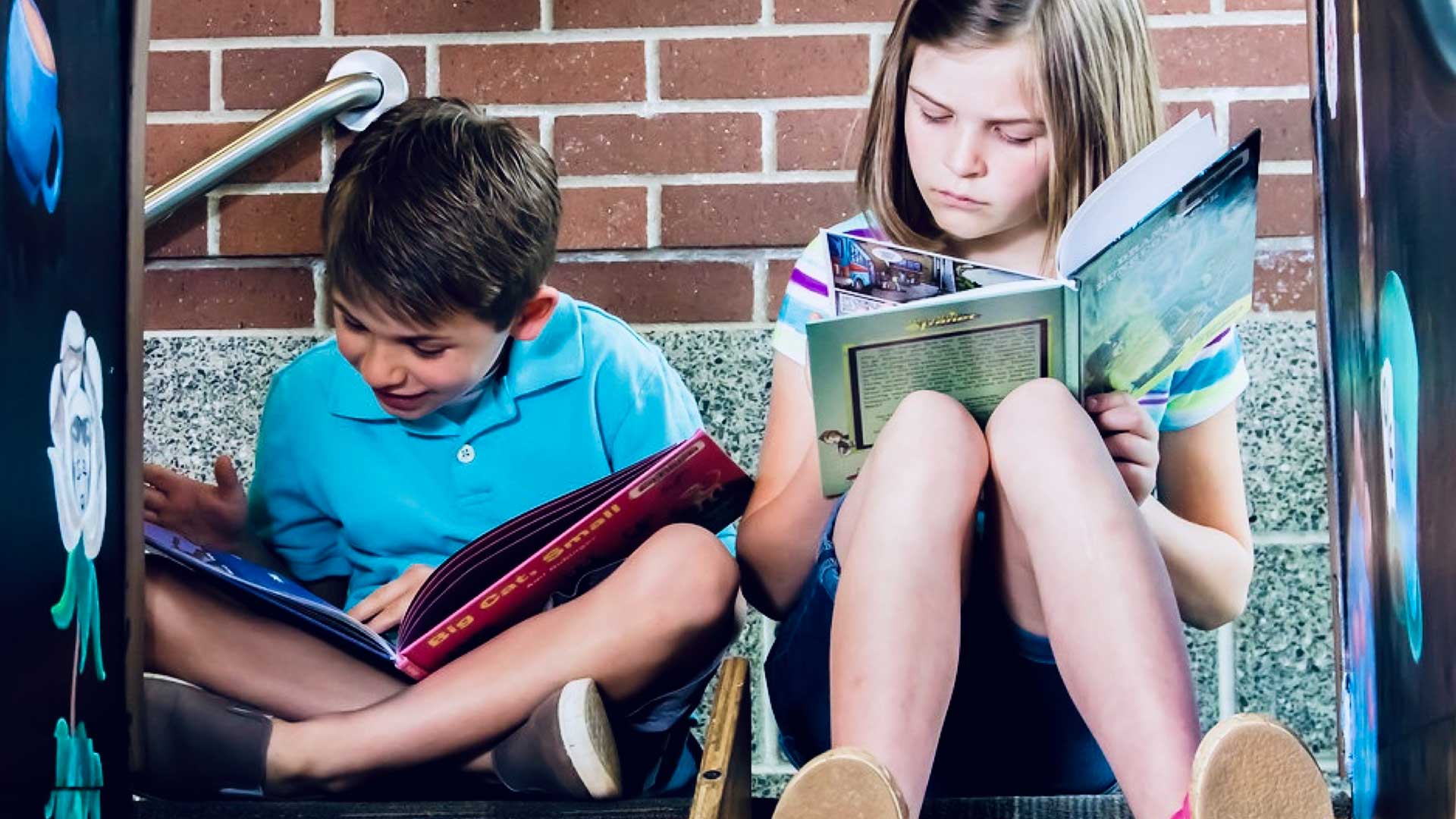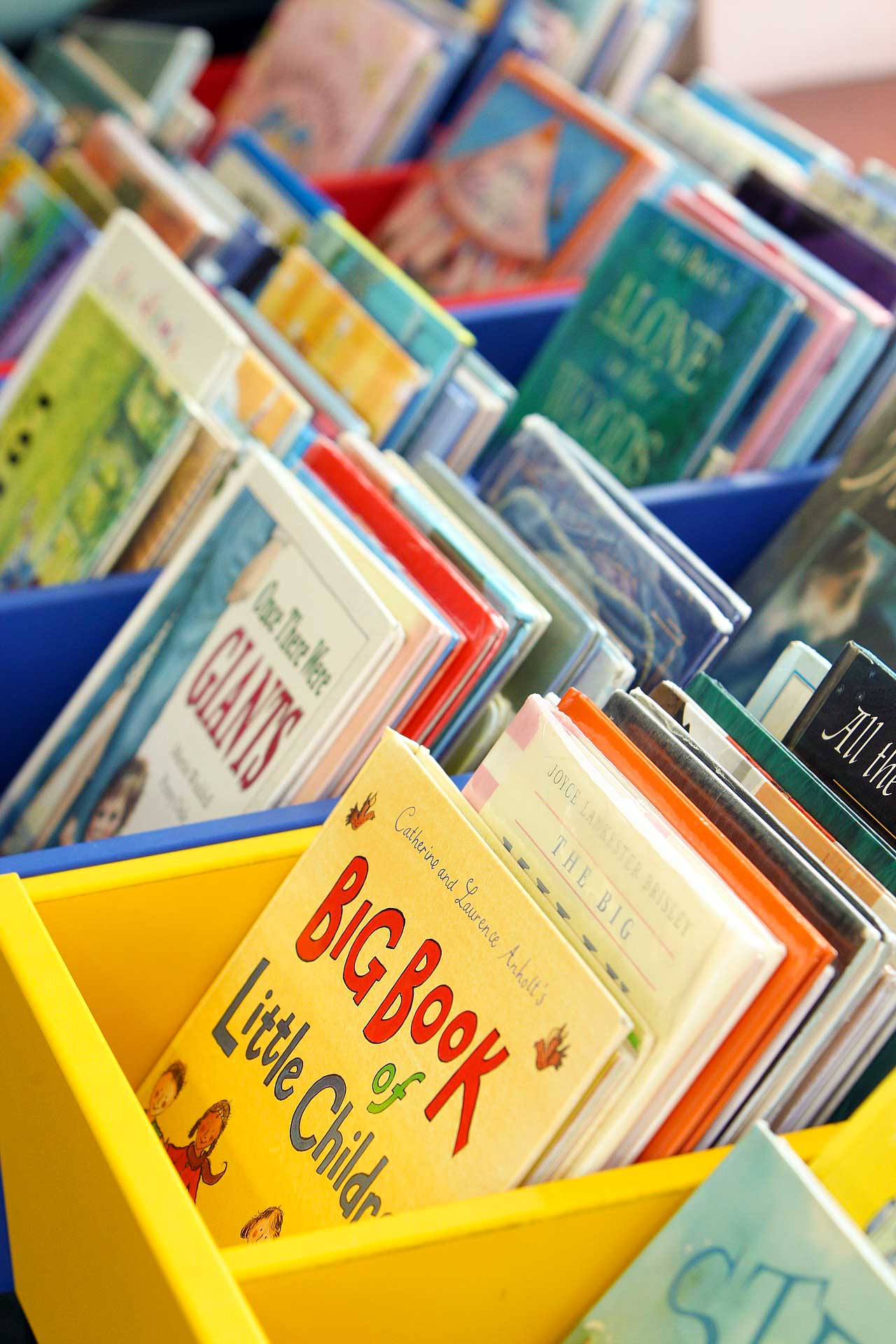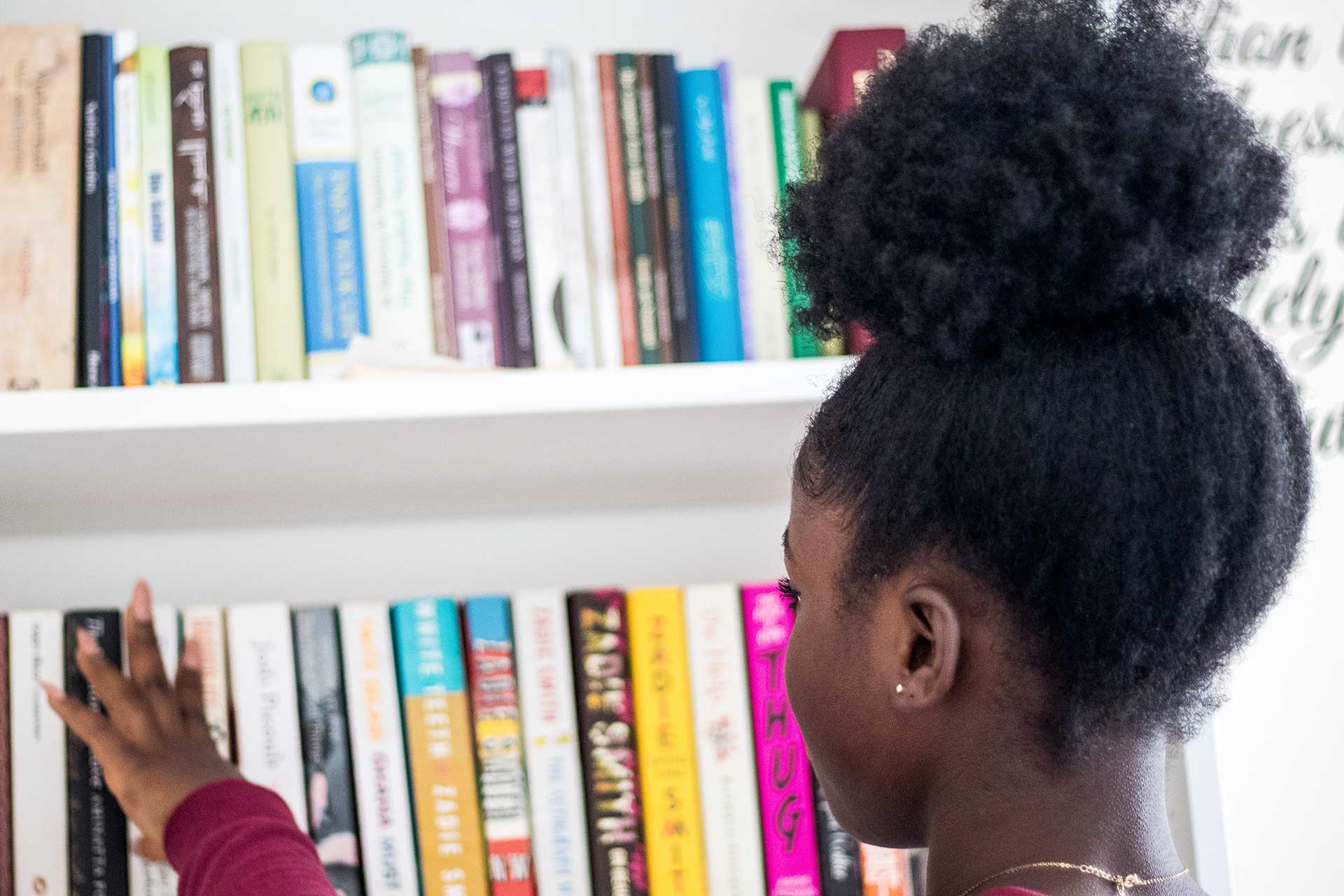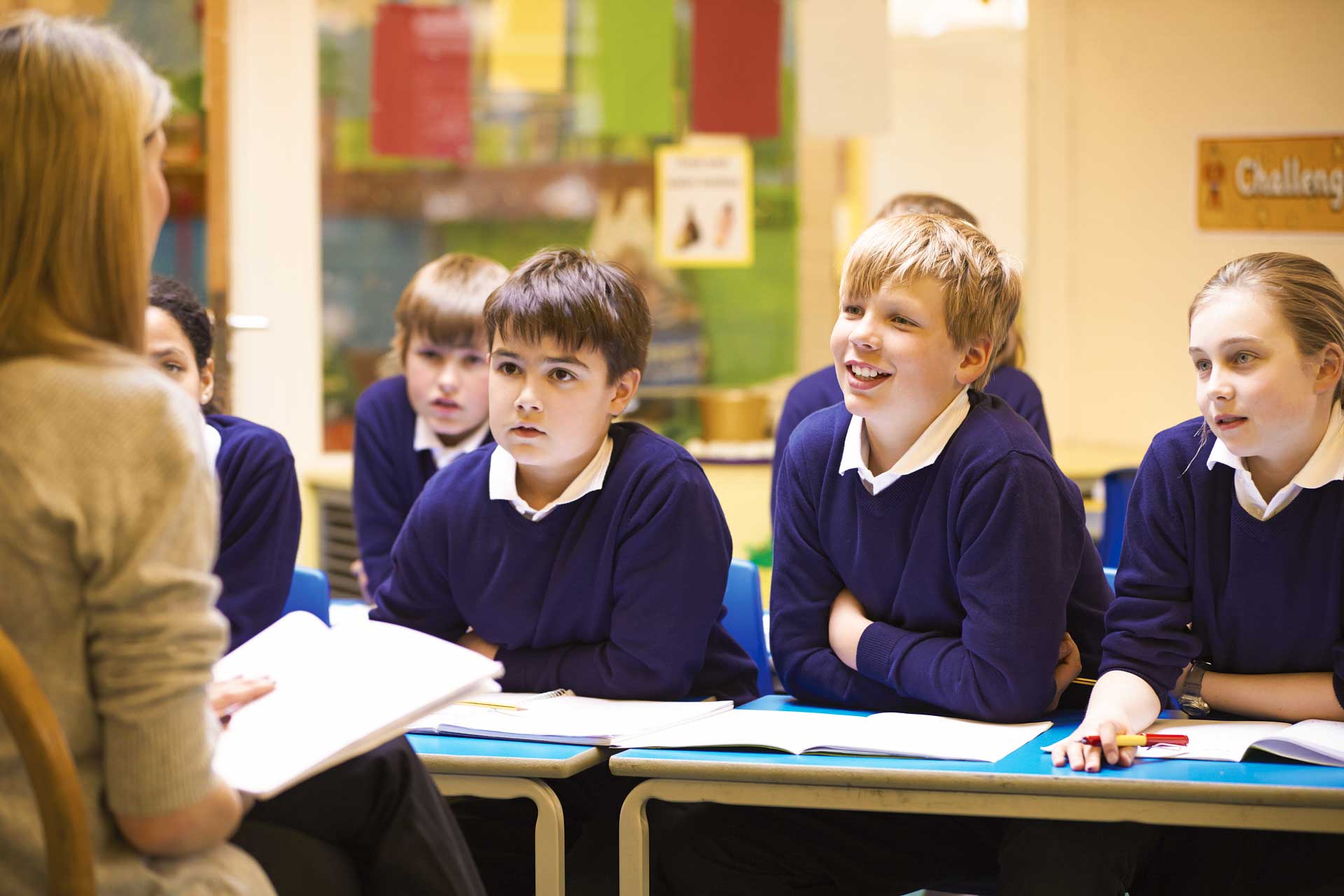
Reading time in classrooms and schools – how to develop reading for pleasure
Isn’t it wonderful when a fellow educator comes into your classroom and comments on how beautiful it is to see such a quiet classroom and each child sitting down with a book and nothing to distract them?
But how should this be achieved, and what is the difference between a quiet reading time and a culture of reading for pleasure?
Expectations of a quiet classroom and children appearing to be reading are not enough. The best libraries and reading spaces are not still, quiet and sterile. They are alive, sparkling with thought and purpose and full of concentrating minds. They are filled with people who are bursting with ideas, feeding a passion for their learning and research, and with brains open to wandering into unexplored or imagined worlds and fired up by fizzing imagination.
Routines might keep children quiet, but they don’t necessarily keep children excited about reading. To develop a reading for pleasure culture in your classroom, children need to want to read, and this culture takes time to develop. So how can you sow the seeds for an environment where a thirst for knowledge, a voracious appetite for books and a self-contained culture of reading blooms?
How to enliven reading time
Schools need to create an atmosphere where children feel safe to explore learning through reading, happy to drift off into imagined lands and stories, and confident to perform, share and talk about poetry, performance, critical reviews and what they like to read.
Activities should promote reading, but also encourage pupils to select their own reading material (with advice and suggestions); include speaking and listening activities; involve the discussion and review of books and facilitate subtle informal assessment.
Here’s a range of activities to help teachers spice up your reading times and help instil a love of reading.
Teacher-led reading activities to encourage reading for pleasure in the classroom during reading time
If your class doesn’t settle to reading easily, try running a different reading-related activity on each day of the week. For example:
- Quiet individual reading.
- Guided reading groups.
- Paired reading or buddy reading with vertical mixed key stage pairs.
- Reading ambassadors, led by top age group pupils.
- Reading discussion groups.
- Teach specific reading expectations. For example, how to treat books with care, what to do if you cannot concentrate in reading time, how to use the classroom and school libraries, how to get help with book suggestions, and how to read non-fiction and other non-linear books.
- Book review activities. This could include a formal written review, a rating out of ten and a short review or creating a quiz on the book for other pupils.
- Oral book reviews – pupils can tell the class why they should read this book. Perhaps create a book suggested podcast for your school network that all pupils can listen to or download. Use every method possible to find out what your children are reading, what other classes and the school are reading, and what children nationally are reading.
- TV trailer style sneak peek previews of all the reading books that will be studied that term or year in English lessons.
- Display and embrace influential adults reading books. For example, create a wall consisting of pictures of teachers each reading their favourite book. Or set a homework activity where the pupils can bring in a picture of a parent, influential adult, sibling, relative or social media influencer reading a book – which can all be collated to form a large display in the classroom or library.
- Answering a quick quiz created by another pupil who has read the same book.
- Non-fiction research activities based on topic books.
- Pupils can listen to a teacher read a story, excerpt or poem, and then discuss it as a group. The teacher can pick out particular words, imagery or ideas and discuss meaning, inferences and images.
- Reserve a space or time for children to share books, for example, books that can be unfurled, walked around or spread out on rows of tables such as the What on Earth Wallchart Timelines or the Street Beneath My Feet series.
- Hold a book auction, where the teacher holds up a book, and enthusiastically pitches the book cover and blurb to the class before inviting ‘bids’ from pupils (who offer to read the book). Multiple copies are advisable for popular and new books!
- Reserve one lesson a week to watch an author performing a book extract, poem or playscript that your class is reading on YouTube, or listen to an audiobook. Many authors have YouTube channels – have a look at Michael Rosen, Jaqueline Wilson and Benjamin Zephaniah. A great source of high-quality audiobooks is Audible.
- Run a weekly or monthly ‘book tasting‘ event in your classroom, for your year group, in the school library, or in a school assembly.
- A little known fact: the pupils that find it really hard to choose a book, always picking up and putting down titles from your shelves, can often be your biggest asset when developing a classroom reading culture. Ask these pupils why they didn’t want to read each book, and you’ll be amazed how much information they’ve taken in and how much they have read before making a decision to look for a different book. These students often make great class librarians and great pupils reading advisors and advocates.
- Create a collection of topical magazines for children and graphic novels for children to choose from.
Pupil-led reading activities to encourage reading for pleasure in the classroom during reading time
- Create a pupil organised book review display in your classroom or school library to enable pupils to read each other’s reviews.
- Reading ambassadors: make use of older pupils in KS2 (primary) or KS4 (secondary) to mentor younger children regarding reading choices, undiscovered genres, lesser-known books, how to use the library, keeping your book stock on-trend, enlivening your reading displays and book areas and maintaining a reading for pleasure culture.
- Link your reading ambassadors to existing KS2, KS3 and KS4 book clubs to form a pupil voice group to help decide on new titles for your school and classroom libraries.
- Children can create a ‘words on the wall’ campaign; posting extracts of books in strategic places around the school.
- Pupils can leave bookmark reviews – handwritten one sentence appraisals of books left in the library book to entice potential readers.
- Pupils can create, format and set each other challenges to find themselves, or another pupil a suitable reading book based upon that reader’s interests.
- Pupils can set challenges to find out more about a particular author, using the internet, library books or knowledge from home; and develop a profile as a display or library guide for other pupils.
How to set up your classroom to help create a reading for pleasure atmosphere during reading time
- Develop a “book flix“, “Prime Reads”, or Top 30 book chart wall display, with book titles chosen by the children.
- Decorate your classroom with book-related life-sized cardboard cutouts, also called standees, from eBay by searching for ‘cutout‘ or ‘standee‘ or ask book marketing agencies or publishers about posters, postcards, bookmarks or other promotional items – see our list of publishers – if they have any spare promotional material. Here’s a 5ft tall Shakespeare figure that will add atmosphere to any classroom.
- Create a ‘book of the day‘ display or a ‘book at the month‘ display in your classroom.
- Have a children’s literature quotation display on the wall, to discuss each day at registration, at the end of the day or in circle time.
How to encourage reading for pleasure outside the classroom
- Teachers can wrap up books in brown paper and create a mystery book package for pupils in the school library, Key Stage or a classroom – set a challenge to the pupils: do you dare to read what’s inside this parcel/box?
- You might want to set up a ‘reading challenge‘ to target a genre or format that your class has overlooked. Perhaps a “book scavenger hunt” will get your class excited or get pupils to ask each other a ‘reading for pleasure question‘. There are also review cards, a book cover switch up and book emoji code quizzes to consider!
- For older classes, a book spine poetry contest is a wonderfully simple and creative activity.
- Consider a book vending machine, or a book swap shed for the playground or other public areas around the school.
- Practice preparing an excerpt or poem to perform, individually, in pairs or a small group – to an audience. Or perform an excerpt or poem to a group of peers. Discuss the poem or excerpt.
- Pupils can carry out a survey of staff/pupil favourite books, newspapers and magazines or websites – featuring quotes, pictures and excerpts.
- Create a holiday-themed ‘book bingo‘ challenge to encourage a breadth of reading, rather than a competitive total tally of books read.
- Involve the students in caring for and keeping your classroom library and reading areas looking tidy and exciting. Develop pupil librarians, displays, pop up book reviews, bookmarks with recommendations, fluorescent post-it notes, cardboard arrows and posters.
- Use software to catalogue your books and keep track of who is reading what and where each book is. If expensive library software is not an option, have a look at the Book Collector app, which is Data Protection compliant and pupil friendly.
- Place books on display using book stands, book blocks or dummy books on bookcases (so that some books on each shelf are facing outwards), or large read and share display stands.
- Use one reading session, at least, a week to visit your school library.
- In the Summer term, follow the Carnegie Book awards. Pupils can submit reviews (moderated by teachers) to the ‘shadowing website‘.
- Storytelling and presentations – pupils can create and share stories in small groups. Genres might include ghost stories, autobiographical stories, or biographies of people they know.
- Pupils could read or recite their own stories, poems, speeches or drama pieces to other age groups – for example, KS2 to EYFS, or KS5 to KS3, or to a wider audience, perhaps moderated and via the school’s website or social media.
- Pupils can design a newspaper page reporting on events/characters in a book they have read recently. This is perfect for home-learning and school extranet platforms.
- Create short video blogs of pupils (and staff) discussing their favourite book and why they like it – or what they are reading now and what they think of it. These videos can be set to display on the school library computer or in an assembly hall.
- Encourage touch typing – practising typing, reading and spelling (especially if the teachers sets up the app to use spelling list words) not only improves proofreading and presentation but also improves a child’s reading speed and reading accuracy. We highly recommend Touch Typing Read and Spell (TTRS), which utilises a visual, auditory and kinaesthetic multi-sensory approach.
- Read in different places. Do you have a forest school, playground seating areas, a school field or space under a large tree? Vary where your children read to spice things up.
- To generate a reading-for-pleasure buzz at home or at school, why not play a game of ‘Bookopoly‘, or create a poetry picture book display.
How to encourage a whole school approach to encourage reading for pleasure in reading time
- Consider rotating your staff for different reading activities. What is each teacher interested in? If you have a teacher or classroom assistant who is passionate about poetry and performance, consider spreading them across the Key Stage or school, sowing that passion amongst a different class each day.
- Help develop children’s literature specialisms in your staff body. Possible implementation – staff might prefer to specialize in one particular activity and supervise a different group each day, or staff might prefer the variety of supervising something different each day.
- Avoid great practice in isolation. If one class has a stunning display or installation promoting an aspect of reading, rather than bin it when a new display is put up, revitalise and recycle it and use it to generate enthusiasm in another classroom, corridor or public space.
Think about where to slot reading into your school timetable. Be innovative and cunning!
Here are some opportunities for timetabled reading:
- Classroom reading time – at least 15 minutes of contiguous time to read per day to read books and choose new books. This might be in form time, tutor group time or class time.
- A timetabled reading period – this daily reading time might incorporate registration in the morning or afternoon or part of a literacy or English lesson. Timetabling offers the opportunity to develop a daily reading programme and to resource or pool support staffing for guided reading, reading groups, literacy support, audiobook groups, and greater depth book clubs.
- A library period – an essential time for children to choose and return books, learn about how a library is organised, carry out research for independent learning, and for teaching to ensure every child always has a reading book to take home.
- Ad hoc and in-school reading time – developing a culture of using slack periods can vastly increase the amount of time pupils read in school per term. For example, targeting and encouraging reading in situations where children are waiting for buses, waiting to be let go at the end of the day, wet playtimes, or other times where there are large groups of pupils supervised in non-curriculum time are great opportunities to shoehorn in ad-hoc quiet reading sessions.
- Regularly calendared paired reading, peer buddy reading, book talk sessions and DEAR (drop everything and read) time for the whole school is a great way to embed reading for pleasure and underpin reading expectations.
Develop whole-school reading policies and encouraging parental and stakeholder participation
- A whole school ‘reading for pleasure‘ policy is a good way to standardise procedure, expectations and whole-school consistency.
- Displaying ‘The rights of the reader‘ and incorporating these into public-facing school policy is a useful way to enforce standards and promote a positive message to parents and other stakeholders.
- Develop and utilise class and year group reading lists to provide a starting point for children, parents and stakeholders. It’s important to include a breadth of fiction and nonfiction to appeal to a wide range of interests, especially since children’s interests can change quickly during primary years. Have a look at our year 3 books run down for some ideas. Here’s our list of year 4 books as a starting point. This collection of year 1 books, for example, offers a wide range of writing styles, presentations, genres and authors. This selection of picture books for reception classes could also provide pre-school parents with an idea of what pupils starting aged 5 can expect.
- Book suggestion lists don’t have to be in paper form. You might consider book recommendation videos or audio podcasts to communicate with parents.
Ensure your school staff members are appropriately trained
- Embed individual staff and whole school reading training, by sharing good practice in your school, using research to feedback to your staff regarding recent developments in the field, and sourcing in-person and online courses and CPD.
If you found this guide on making timetabled reading time more exciting useful, you might also be interested in reading our directory of UK children’s publishers, our guide to online training for teachers, our list of useful websites for children’s home learning and our list of great children’s literature blogs to follow.




